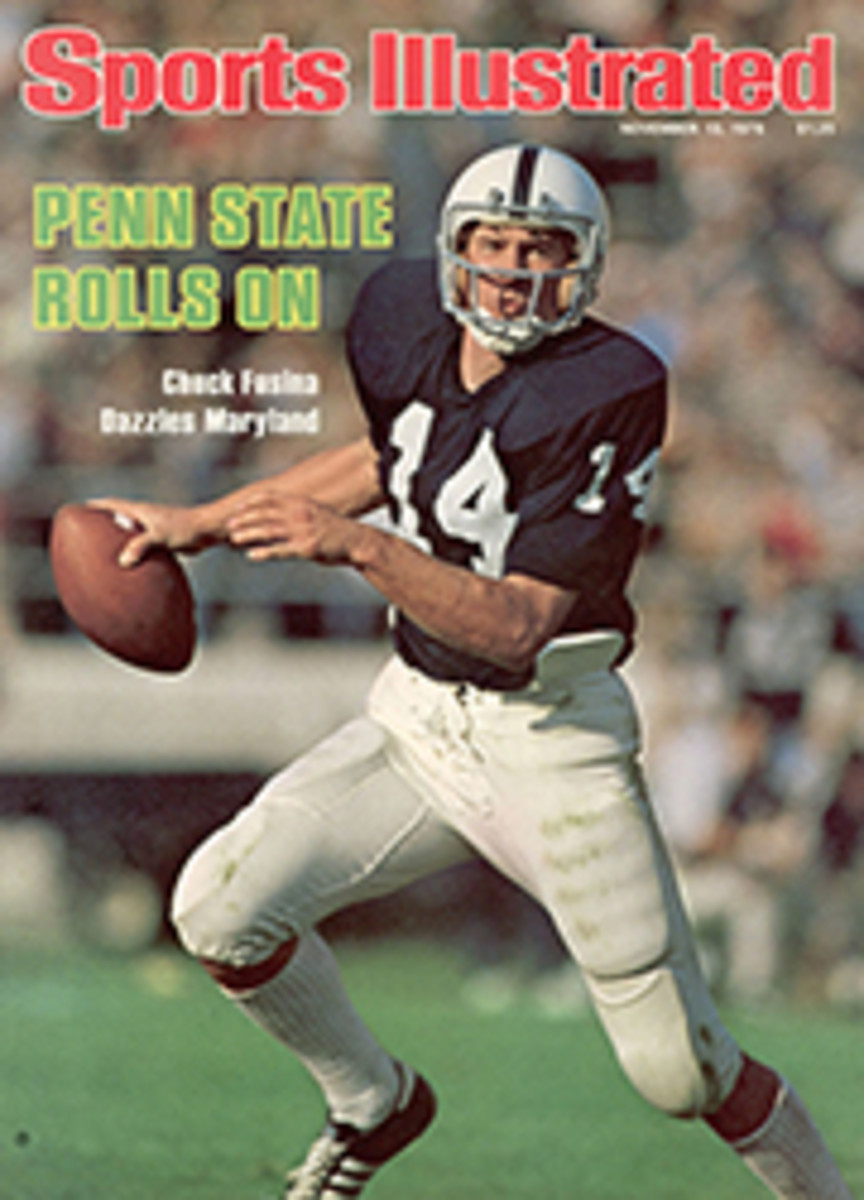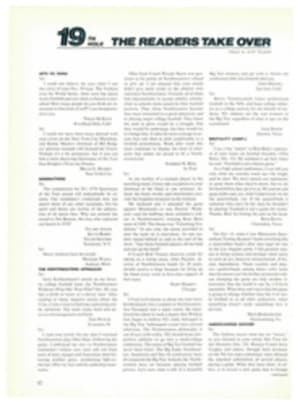
HE WENT UP FOR AN EASY LAYUP, AND CAME DOWN WITH A LESSON IN LIFE
I had known who Wilt Chamberlain was for more than a year, ever since a Philadelphia Evening Bulletin headline announced that a 6'11" sophomore figured to make Overbrook High School very tough. I had seen him play just a year before on our school court and had even been on the floor with him for a few minutes. But the idea of playing against him, head to head (or, rather, head to chest), was exhilarating and, at the same time, overwhelming. Yet, it was really about to happen.
My prep school, the Episcopal Academy, was only a few miles from Over-brook High, and for the second straight year our coach, Jack Harter, had arranged a scrimmage between these two unlikely rivals: one inner-city and mainly black, the nemesis of the vast Philadelphia Public League; the other suburban and white, a member of the six-team, private-school Interacademic League. I looked forward to seeing the already celebrated Chamberlain enter our gym, and I marveled at his basketball skills, but where and how he lived, what his life was like and why there were no black students at Episcopal were questions that simply did not occur to me as a 16-year-old in 1953.
Although Episcopal had twice beaten Germantown High School (one of whose players, I would learn some years later, was Bill Cosby), we were no match for Overbrook, and I can only speculate that it was the availability of our gym during the holidays that lured such a powerhouse to our school. It certainly wasn't the competition.
The year before, when Wilt and I were both sophomores, I had watched horror-struck from the bench as he dunked a shot right in the middle of the game. I had seen pros like Neil Johnston of the Warriors dunk the ball in their pregame warm-up drills at the Arena, but the idea of a high school player doing it—and doing it during a game—was scary.
By the time I entered the scrimmage, Wilt, content now merely to pass off, was set up in a low post, with me irrelevantly stationed behind him, trying to peer over his shoulder at what was going on. To my immense relief, Wilt very shortly retired to the sidelines, driven there less by my defense than by the desire of the Overbrook coach to hold down the score.
But a year later, a day or two after Christmas in 1953, I was ready to go one-on-one with Wilt for real. The matter of his size was a formidable psychological problem, not to mention a physical one. Because of my height (I was a shade over 6'3"), I had automatically been the center on every team I had played for since grade school, and I was long accustomed to being taller than almost everyone I knew. But Wilt, a legitimate seven-footer, gave me an early lesson in relativity. Having expected to see just a larger version of a "big" kid like myself, both of us wearing standard white high-top Chuck Taylor All Star sneakers, I was simply not prepared to be dwarfed, to feel little, to feel unable to cope. At the center-jump circle Wilt and I exchanged an old-fashioned, straight, square, mid-Victorian handshake.
I said, "How ya doin', Wilt?"
He smiled and responded, "How ya doin', Buddyroll?" and the game was on. It was hardly a game, however.
Aside from the image of Overbrook's coach, a short, spirited man whose repeated entreaty "Wilton! Wilton! Play defense!" punctuated the game, most of the details of that scrimmage have faded, including the score, if anybody bothered to keep it. One play, however, remains clear in my memory a quarter of a century later, for it permanently changed my whole perception of the game of basketball. Harter had installed a fast-breaking offense that season, one of the first in our league, and, for those days, we scored a lot of points with it. It was a structured, three-on-two break, originating from a 1-2-2 zone, and I always filled the left-side lane. Leaving Wilt behind for once, we had Overbrook's guards in a classic three-on-two situation, and our middle man gave me a perfect bounce pass as I broke to the basket.
Receiving the ball in stride, I took one last big step and laid it up for what seemed an easy two points. I cannot possibly convey the sense of amazement, shock and disbelief that I felt when I saw the ball land, not in the basket, but far back on the stage at the end of the gym, sending a rack of folding chairs flying. Although I didn't know it then, because I didn't have the vocabulary to describe it, I had been stuffed.
I had never before been stuffed. I had never before witnessed my teammates—or anybody else—being stuffed. It had never occurred to me that such a thing could happen in a basketball game. Where Wilt came from and how he got there I still do not understand, but this much I do know: from that moment my innocence was forever, irretrievably lost. To this day there is a tiny part of me that is gun-shy. There is always the chance, on the easiest, most wide-open layup in the most casual two-on-two game, that the shadow of that giant hand will descend from the heavens and contemptuously flick my shot into nowhere. Was Wilt's block my first intimation of life's tenuousness and uncertainty?
Wilt Chamberlain, to this day, is remembered for his offensive heroics. Well, that's a mistake. And no less an authority than I can attest to it.
ILLUSTRATION

